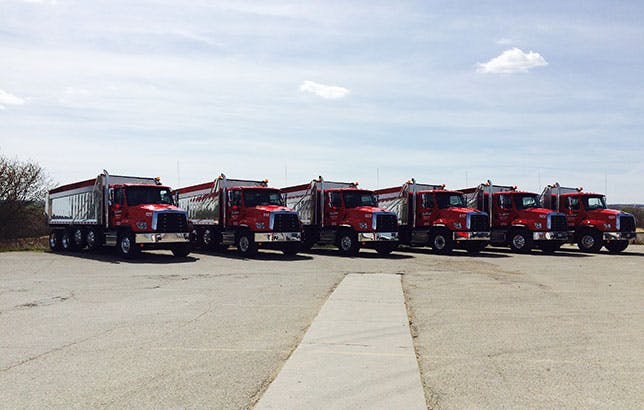
In the world of heavy-duty trucks, reliability and strength are the cornerstones that keep the wheels of industry turning. Whether hauling freight across long distances, navigating challenging terrain, or powering construction and industrial applications, heavy-duty trucks are the unsung heroes of our modern economy. At the heart of these workhorses are their components, each carefully designed and built to withstand the toughest conditions. In this article, we’ll delve into the critical role that strength and reliability play in heavy-duty truck components.
Table of Contents
The Demands on Heavy-Duty Trucks
Heavy-duty trucks are designed to carry out some of the most demanding tasks. These include:
- Long-Haul Trucking: Transporting goods across vast distances, often under tight deadlines, requires vehicles that can endure continuous use.
- Off-Roading and Construction: Many heavy-duty trucks operate in rugged off-road environments, including construction sites, mining operations, and forestry.
- Towing and Hauling: Heavy-duty trucks are expected to tow and haul massive loads, which places tremendous stress on their components.
- Specialized Applications: Some heavy-duty trucks are customized for specific industries, such as waste management or agriculture, where reliability is crucial.
The Backbone of Heavy-Duty Truck Components
Reliability and strength are the backbone of heavy-duty truck components. Here are some key components where these characteristics shine:
Engine and Powertrain
The engine is the heart of a heavy-duty truck, and its reliability is paramount. Heavy-duty trucks are often equipped with robust diesel engines known for their durability and torque. The powertrain, which includes the transmission and driveline, must be strong enough to handle the immense loads and constant use. These components are engineered to ensure reliability and longevity, minimizing downtime and maintenance costs.
Suspension and Chassis
Heavy-duty truck suspensions and chassis are built for rugged terrain and heavy payloads. They are designed to absorb shocks, distribute weight evenly, and provide stability. The chassis, in particular, needs to be exceptionally strong to support the weight of the truck and its cargo.
Braking System
The braking system of a heavy-duty truck is critical for safety. It must be not only powerful but also highly reliable. Components like air disc brakes and anti-lock braking systems are commonly used to ensure stopping power, even with heavy loads.
Axles and Differentials
Axles and differentials are responsible for transferring power from the engine to the wheels. They must be built to withstand immense torque and provide reliable performance. Heavy-duty trucks often use robust axles and differentials, such as tandem axles, for added strength.
Frame and Body
The frame of a heavy-duty truck is like its backbone. It supports the entire structure and payload. Truck frames are typically made from high-strength steel to withstand the stress and wear and tear they endure. The body of the truck, whether it’s a flatbed, tanker, or box trailer, must be durable and dependable.
Advancements in Materials and Design
Advancements in materials and design have significantly improved the strength and reliability of heavy-duty truck components. Here are a few key developments:
High-Strength Alloys
The use of high-strength alloys and advanced materials has led to lighter yet stronger components. This not only enhances performance but also contributes to fuel efficiency.
Computer-Aided Design
Computer-aided design (CAD) and simulation have revolutionized the development of heavy-duty truck components. Engineers can create and test designs in a virtual environment, identifying weaknesses and improving strength and reliability.
Advanced Manufacturing Techniques
Manufacturers employ advanced techniques like precision machining and laser cutting to create components with exact specifications, enhancing their strength and reliability.
Quality Control Measures
Stringent quality control measures, including thorough testing and inspections, are integral to ensuring that each component meets high standards of reliability.
The Importance of Regular Maintenance
While the strength and reliability of heavy-duty truck components are critical, so is regular maintenance. Even the toughest components require care and attention to ensure they function optimally. Routine maintenance and inspections help identify and address wear and tear before it becomes a serious issue, preventing breakdowns and costly repairs.
Conclusion
Strength and reliability are not just desirable attributes in heavy-duty truck components; they are essential. The demands placed on these vehicles are immense, and their ability to perform consistently and endure the harshest conditions keeps industries and economies running smoothly. Advances in materials, design, and manufacturing techniques continue to push the boundaries of what heavy-duty trucks can achieve. These unsung heroes of the road and worksite are the embodiment of strength and reliability, and their components are the true backbone of their enduring performance.


